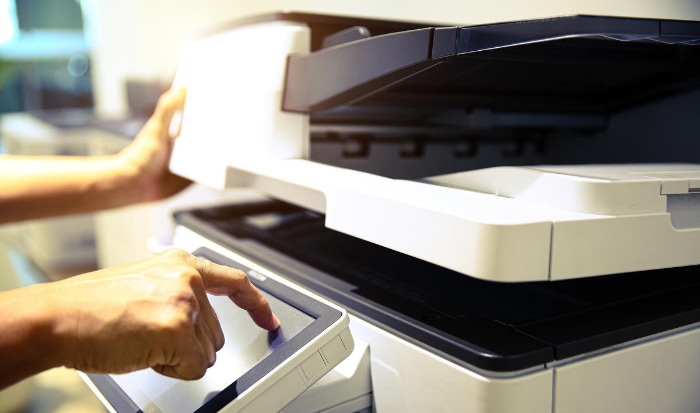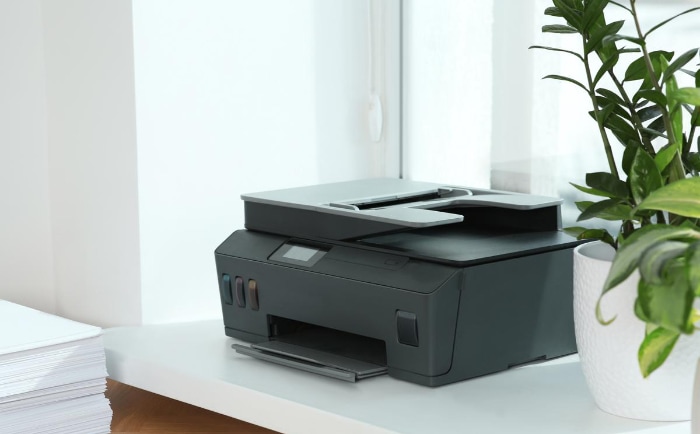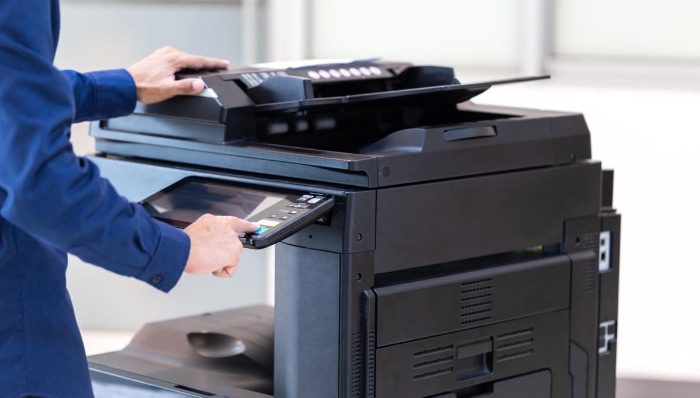Duplex Scanning: What You Need to Know

Advancements in scanning technology have revolutionized the way businesses and individuals manage, store, and share documents. Yet, amidst a myriad of options, one particular type—duplex scanning—stands out for its efficiency and convenience.
This innovation allows both sides of a document to be scanned simultaneously, a feature that is transforming various sectors from finance to education. If you’ve ever wondered why duplex scanning is garnering attention or considered investing in a duplex scanner, you’ve come to the right place.
What is Duplex Scanning?
Duplex scanning is an innovation in document imaging technology that allows for the simultaneous capture of both sides of a document in a single pass through the scanner. The implications of this development are extensive, affecting various industries and even personal use cases.
Definition of Duplex Scanning
Duplex scanning refers to the ability of a document scanner to automatically scan a sheet of paper on both sides. Unlike single-sided scanners, which require manual intervention to turn the paper over for scanning the second side, duplex scanners automate this process.
Technical Aspects of How It Works
A duplex scanner’s operation relies on single or multiple scanning elements. Single-element designs usually have one scanning sensor on each side of the paper path to capture both sides as the document passes through.
In multiple-element designs, the document is briefly paused in the middle of the scan to allow for a quick reversal and re-scanning, though this is done so quickly that it appears seamless to the user.
Components Involved in Duplex Scanning
- Scanner Bed or Feeder: Most duplex scanners come with an automatic document feeder (ADF) that holds multiple sheets and feeds them through the scanning process.
- Scanning Elements: These are the sensors that capture the image of the document. In duplex scanners, either multiple elements are used or a single element scans both sides.
- Image Processing Software: After capture, the scanned images are processed to enhance quality, correct orientation, and prepare for output.
- Control Software: This is the user interface that enables various scanning settings, including the option to choose between single-sided and double-sided scanning.
Mechanism of Operation
When a document is fed into a duplex scanner, it travels along a predetermined paper path. As it passes through, scanning elements on both sides of the path capture the document’s front and back in quick succession.
The resulting digital images are then processed by internal software to produce a clean, high-resolution scan. Finally, the scanned document is either saved to a predetermined location or made available for further processing.
Comparison with Single-Sided Scanning
To appreciate the efficiency of duplex scanning, it’s beneficial to compare it with single-sided scanning. With single-sided scanners, each page must be manually flipped and fed back into the scanner to capture the other side, a time-consuming and error-prone process.
Duplex scanners eliminate this hassle by automating the entire procedure, significantly reducing the time and effort involved.
Advantages of Duplex Scanning
The uptake of duplex scanning in various sectors isn’t merely a trend but a reflection of its multiple advantages. From improving operational efficiency to lowering costs, duplex scanning offers a range of benefits that address both business needs and environmental concerns.
Time Efficiency
One of the most compelling advantages of duplex scanning is its time-saving capability. Traditional single-sided scanners require manual flipping of each sheet to capture both sides, a tedious process that consumes valuable time.
Duplex scanners, on the other hand, scan both sides of a document simultaneously in a single pass. This drastically speeds up large scanning projects, whether you’re digitizing a multi-page contract or an entire library of academic journals.
Cost Effectiveness
In any business operation, time is money. The quick scanning ability of duplex scanners directly correlates with reduced labor costs.
The automatic nature of duplex scanning also minimizes the chance of errors that could arise from manual operations, such as forgetting to scan a side or misfeeding a page. Thus, the initial investment in a duplex scanner can often be offset by the resultant operational efficiencies and reduced labor costs.
Environmental Benefits
Duplex scanning contributes positively to sustainability efforts. By enabling double-sided scanning, it encourages double-sided printing and copying, which in turn reduces paper consumption.
This cascading effect has significant environmental benefits, from less waste in landfills to a reduction in the carbon footprint associated with paper production and disposal.
Enhanced Data Management
Automated scanning of both sides of a document provides a comprehensive data capture method that is particularly useful in settings that require meticulous record-keeping, such as medical practices or legal firms. Duplex scanning ensures that no information is lost or overlooked, thus improving the integrity of data management systems.
Versatility
The technology is versatile and finds applications in various settings. From large corporate offices that handle voluminous paperwork to small businesses and even home offices, duplex scanning fits a variety of needs and scales.
Its adaptability makes it a useful tool across multiple industries, including finance, healthcare, and education.
Limitations and Challenges of Duplex Scanning

While duplex scanning presents a multitude of advantages, it is not without its limitations and challenges. From initial costs to the intricacies of software compatibility, it is essential to weigh these factors before opting for a duplex scanning solution.
Equipment Costs
One of the foremost limitations of duplex scanners is the initial financial outlay. High-quality duplex scanners are often more expensive than their single-sided counterparts, primarily because of the added technology that enables automatic two-sided scanning.
Businesses or individuals considering an upgrade must assess whether the long-term benefits will outweigh the initial costs.
Software Requirements
Duplex scanning is not just about the hardware; it also requires compatible software to run efficiently. Most duplex scanners come with their own software, but these may or may not be compatible with existing systems.
There could also be a learning curve involved, requiring training time for staff, which could temporarily hamper productivity.
Limitations on Document Types
Duplex scanners are highly efficient but may not be suitable for all types of documents. For instance, scanning documents with varying thickness, sizes, or those that are crumpled or torn, could pose challenges.
Specialized or fragile documents may still require manual scanning, as automated duplex scanning can sometimes be too harsh for delicate or non-standard papers.
Power Consumption
While duplex scanning saves time and resources, it does require more power to operate compared to a basic single-sided scanner. The additional scanning elements and automated feeding mechanisms consume more electricity, which could slightly increase operational costs over time.
Potential for Mechanical Issues
The complexity of duplex scanning technology also increases the potential for mechanical failures or issues. Automatic document feeders and dual scanning elements can sometimes malfunction, leading to scan errors or paper jams.
These issues can be exacerbated if the scanner is not properly maintained or if the equipment is of low quality.
Use Cases of Duplex Scanning
The utility of duplex scanning extends far beyond merely speeding up the scanning process. Various sectors have come to recognize its benefits, integrating it into their daily operations.
Business Applications
- Banking and Financial Services
Duplex scanning is crucial in banking where enormous volumes of documents like application forms, checks, and account statements need to be digitized. By using duplex scanners, banks ensure quicker and more efficient data capture, which in turn expedites processing and improves customer service. - Legal Services
The legal sector is another area where massive amounts of paperwork are the norm. Duplex scanners facilitate the rapid digitization of legal documents, such as contracts and court filings, without the risk of missing any data from either side. - Retail and Inventory Management
In retail environments, duplex scanning can be utilized for rapidly scanning invoices, purchase orders, and shipment receipts, making inventory management more efficient.
Personal Applications
- Home Office
For freelancers or remote workers, a duplex scanner can drastically simplify administrative tasks. Scanning client contracts, invoices, and other relevant documents becomes a swift process, freeing up time for more productive activities. - Academic Research
Researchers often have to consult numerous scholarly articles, theses, and books. Duplex scanning provides a faster method to digitize these resources for easier reference and data analysis.
Healthcare Sector
In healthcare, duplex scanners are often used for patient records, prescriptions, and insurance forms. The technology ensures that all relevant information is captured, enhancing the quality of healthcare data management.
Duplex scanners are particularly useful in large healthcare facilities where speed and data integrity are paramount.
Public Administration
Government offices and public sector organizations deal with significant amounts of paperwork, from application forms to identity verification documents. Duplex scanning ensures faster data capture, which is essential for improving the speed and efficiency of public services.
Educational Institutions
Schools and universities have also embraced duplex scanning to handle a variety of administrative tasks, from scanning student records to academic materials. In academic libraries, duplex scanners allow for the rapid digitization of books and academic journals, making them more accessible to students and researchers alike.
How to Choose a Duplex Scanner

Selecting the right duplex scanner can be a critical decision, given its impact on operational efficiency and document management. From understanding the technical specifications to considering the total cost of ownership, various factors come into play.
Understand Your Requirements
First and foremost, define the specific needs of your organization or personal project. Consider the volume of documents you’ll be scanning, the types of documents, and the level of detail required.
The answers to these questions will help determine which duplex scanner features are essential for you.
Scan Speed and Capacity
Different models offer varying scan speeds, usually calculated in pages per minute (PPM). A high-speed scanner is crucial for large organizations, but for smaller operations or personal use, a moderate speed might suffice.
Also, consider the automatic document feeder (ADF) capacity to ensure it aligns with your scanning volume needs.
Image Quality
Resolution, measured in dots per inch (DPI), is an important factor to consider. Higher DPI will offer better image quality but could be overkill for standard text documents.
For specialized tasks like scanning photographs or detailed diagrams, a higher DPI would be advantageous.
Software Compatibility
Check the compatibility of the scanner’s software with your existing systems. A scanner that easily integrates with your existing document management or image editing software will be more convenient and efficient to use.
Connectivity Options
Consider how the scanner will connect to computers or networks. USB connections are standard, but Ethernet or wireless connectivity options may offer more flexibility, especially for multiple users.
Total Cost of Ownership
While the initial purchase price is a significant factor, also consider long-term costs, including maintenance, replacement parts, and electricity consumption. Assess warranties and customer support services as part of the total cost of ownership.
User Reviews and Recommendations
Reading user reviews and seeking recommendations from other organizations in your sector can provide valuable insights. Reviews can reveal real-world pros and cons that may not be immediately obvious from the manufacturer’s specifications.
Brand Reputation
Lastly, consider the brand’s reputation for quality, durability, and customer service. Established brands are more likely to offer reliable products backed by good customer service, helping ensure that your investment is a wise one.
Conclusion
Selecting the right duplex scanner is a multifaceted process that calls for a deep analysis of both technical specifications and practical needs. From its numerous advantages such as time efficiency and cost effectiveness to its limitations like initial equipment costs and software requirements, duplex scanning offers a compelling but complex landscape.
Its diverse applications range from corporate environments to healthcare settings, underscoring its versatility. By carefully considering various factors like scan speed, image quality, and total cost of ownership, prospective buyers can make an informed choice that aligns with their specific requirements.



